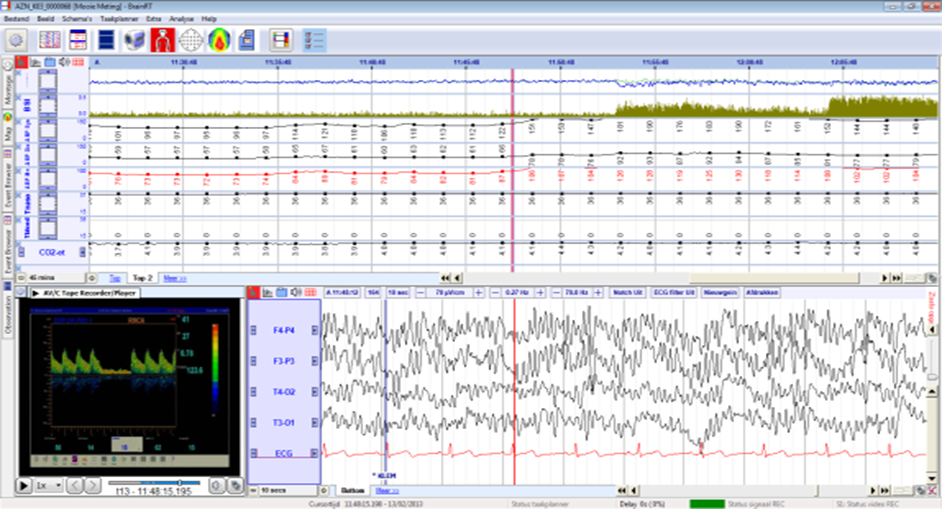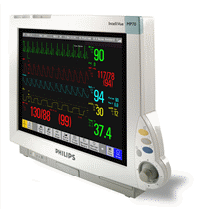Neurologic processing
EEG during surgery

The BrainRT™ equipment can be used for EEG monitoring during surgery. The EEG hardware is qualified for use in the operation room, suffering minimally from surrounding equipment.
Thanks to real time automatic analysis of the EEG signals it becomes easy to spot asymmetries of the brain activity, which is a common problem during Carotid endarterectomy. By adding the Brain Symmetry Index to the trend overview, you get a valuable decision support tool for surgery related issues such as the necessity to place a shunt.
Adding to this the real time monitoring options, allowing the doctor to monitor the proceedings from his desktop computer, it is clear that the BrainRT™ equipment is a state of the art solution for EEG monitoring during surgery.
Include data from Patient Monitor and TCD to EEG signals

When recording EEG signals with the BrainRT™ software, you can add a synchronized recording of Philips IntelliVue patient monitor signals to your acquisition. This allows for a better insight into the relation between EEG activity, respiration, blood pressure, blood gases and other data from the monitor which was previously only available in a separate database.
Also data coming from the Transcranial Doppler device can be synchronized with the EEG acquisition:
- Video images from the TCD device can be recorded as video input
- Analog signals from the TCD device can be recorded together with the EEG signals
Interface with AIMS for notes, alarms and events
BrainRT™ has an interface to the Anesthesia Information Management System (AIMS). Notes, alarms and events, entered by the surgeon in the AIMS, are inserted automatically in the BrainRT™ EEG registration. During the acquisition, this gives you information about current medication status and other useful information.
When reviewing the measurement afterwards, this feature enables you to evaluate the effect of medication and other actions performed during the surgery.